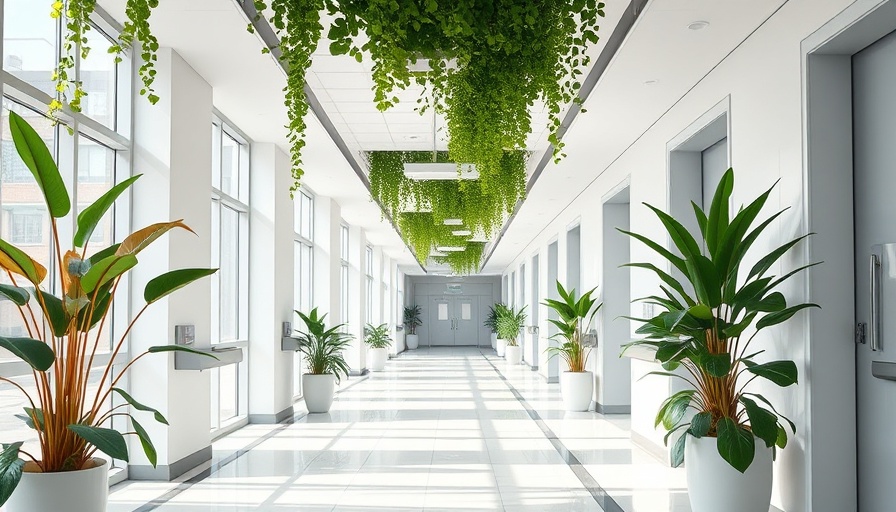
Understanding Biophilic Design in Healthcare
Biophilic design incorporates natural elements into architectural spaces to create calming, restorative environments—especially important in healthcare facilities. The essence of biophilic design is recognizing the profound impact our surroundings have on our mental and physical well-being, as Sarah Harvey, a leading designer, states: "Biophilic design means recognizing that the human-animal brain is deeply connected to its surroundings." Research is rapidly validating that access to nature through design not only assists patients during their recovery but also fosters a sense of tranquility among staff.
The Impact on Patient Recovery
According to extensive studies, patients in environments enriched with biophilic elements, such as plants and natural lighting, experience shorter recovery times. One landmark study by Robert Ulrich showed that patients with views of natural scenery averaged 18 hours shorter hospital stays compared to those with views of walls. The healing power of nature isn’t just anecdotal—scientific findings back the notion that implementing biophilic components can lead to better health outcomes, managing pain more effectively and reducing stress.
Benefits for Healthcare Staff
Biophilic design isn’t just beneficial for patients; it plays a crucial role in improving caregivers' experiences as well. Access to natural light and views has been linked to improved mental well-being and performance. For example, a redesign of an ICU to incorporate more outdoor views resulted in a staggering drop in absenteeism by nearly 40%. Fostering an environment where staff feel happier and less stressed ultimately translates into better patient care.
Financial Upsides of Biophilic Design
The integration of biophilic design can also affect healthcare facilities' financial health. Shorter patient stays mean that facilities can accommodate more patients, leading to increased revenue. Studies have shown that enhancing patient experience—improving evaluation ratings—can lead to significant financial rewards. Facilities that witness just a 1% increase in patient satisfaction ratings could see net increases of up to $247,000, highlighting that investing in comfort and well-being has tangible monetary benefits.
Strategies for Implementation
Incorporating biophilic design principles requires thoughtful planning and execution. Designers must evaluate spaces and integrate natural elements meaningfully. For example, creating serene waiting areas filled with greenery or individual patient rooms exposed to natural light can make a world of difference. Spaces can also feature murals or digital representations of nature to simulate outdoor experiences where actual views are limited. Balancing functionality with aesthetic appeal is critical, ensuring serene environments without sacrificing practicality.
Counterarguments and Diverse Perspectives
While the advantages of biophilic design are widely acknowledged, some critics argue about the costs associated with implementing these strategies. Transitioning existing facilities into biophilic spaces can require significant investment. However, when considering the long-term benefits—including reduced recovery times, improved employee satisfaction, and potentially enhanced patient throughput—it's becoming increasingly evident that the financial outlays can lead to impressive returns on investment.
Final Thoughts on the Future of Healthcare Design
As our understanding of biophilic design continues to grow, it has become clear that this trend is not merely a passing fad but a necessary evolution in healthcare design. Integrating natural elements into the built environment can yield profound benefits, enhancing patient satisfaction and staff productivity while supporting a healthier community.
In conclusion, investing in biophilic design within healthcare facilities isn’t just about beautifying spaces; it’s about fundamentally transforming patient and caregiver experiences. As facilities reconsider their design strategies, the clear message is that nature holds immense power—a power that, when harnessed, can lead to healing not just of individuals, but of entire healthcare systems. It’s time to bring the healing essence of nature back into healthcare settings.
 Add Row
Add Row  Add
Add 






Write A Comment